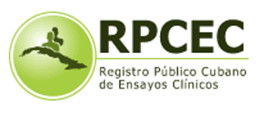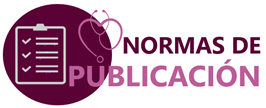Blood transfusions. More than three centuries of history
Keywords:
Blood transfusion , History , Rh Factor , Rh-Hr blood group systemAbstract
Introduction: the history of transfusion has gone through different paths that meant great challenges for ancient physicians, until achieving perfection in the medical procedure that saves millions of lives around the world every year.
Objective: to identify the most relevant aspects in the historical evolution of blood transfusion as a therapeutic procedure.
Method: a bibliographic review was carried out between February 17 and 26, 2024. To search for information, the following databases were used: Dialnet, EBSCO, Elsevier, Medline, SciELO and national and international open access journals indexed in Google Scholar. The terms used were: Blood transfusions, transfusion history, Karl Landsteiner, ABO system, Rh factor and medicine in the First World War; in Spanish and English. 14 bibliographic references were used.
Development: there are many personalities who dedicated their scientific work to such an altruistic act during their lives. The Austrian Karl Landsteiner stands out. He perfected the technique at analytical levels after realizing that people's blood was not completely equal, which led him to a more in-depth study that led to the birth of the ABO system and the Rh factor; discoveries that led him to be awarded the Nobel Prize in Medicine and Physiology.
Conclusions: the history of transfusion has gone through important paths that have allowed it, thanks to scientists from past eras, to achieve almost total success.
Downloads
References
Berro M, Rodríguez I. ¿Por qué continuamos transfundiendo dos unidades de sangre si con una es suficiente? Rev Med Urug [Internet]. 2021 [citado 2024 Feb 21];37(1):[aprox. 5p.]. Disponible en: http://www.scielo.edu.uy/scielo.php?pid=S1688-03902021000101502&script=sci_arttext
Gómez Rojas JP. Historia de la Anestesiología. Rev mex anestesiol [Internet]. 2021 [citado 2024 Feb 21];44(4):288-9. Disponible en: http://www.scielo.org.mx/scielo.php?script=sci_arttext&pid=S0484-79032021000400288&Ing=es
Torres Alarcón CG, García Ruiz A, Cañete Ibáñez CR, Morales Padoga II, Muñoz Arce CM, Cid Domínguez BE, et al. Antígenos del sistema sanguíneo ABO como factor de riesgo para la gravedad de la infección por SARS-CoV-2. Gac Med Méx [Internet]. 2021 [citado 2024 Feb 21];157(2):181-187. Disponible en: https:www.gacetamedicademexico.com/frame_esp.php?id=569
González García O. La Primera Guerra Mundial: el amanecer de las transfusiones sanguíneas.RevSanidMil [Internet]. 2019 [citado 2024 Feb 21];75(1):52-62. Disponible en: http://scielo.isciii.es/scielo.php?script=sci_arttext&pid=S1887-85712019000100052&lng=es
Neri Vela R, Rodríguez Paz A, Carrillo Esper R. Notas acerca de la transfusión sanguínea en México. Rev mex anestesiol. [Internet]. 2022 [citado 2024 Feb 21];45(3):212-15. Disponible en: http:www.scielo.org.mx/scielo.php?script=sci_arttext&pid=S0484-79032022000300212&Ing=es
Chávez Moya MO, León de Armas L, Cruz Coello ML. Conflicto ABO y Rh, reacciones transfusionales. MedEst [Internet]. 2023 [citado 2024 Feb 26];3(3):e201. Disponible en: https://revmedest.sld.cu/index.php/medest/article/view/201
de Torres Fabios PB. Historia de la donación y transfusión sanguínea.[Internet] 2008 [citado2024 Feb 26]. Disponible en: https://scholar.google.com/scholar?hl=en&as_sdt=0%2C5&q=primera+transfusi%C3%B3n+sangu%C3%ADnea&btnG=#d=gs_qabs&t=1708558040561&u=%23p%3DkKYiY9pMKrUJ
Murillo-Godínez G. Breve historia de la transfusión sanguínea. Rev Hematol Mex.[Internet] 2019 [citado 2024 Feb 26];20(1):1-3. Disponible en: https://www.medigraphic.com/cgi-bin/news/resumen.cgi?IDARTICULO=86378.
Mocay KP. Primera transfusión de sangre y su evolución hasta el día de hoy. Rev Universitarios Potosinos. [Internet] 2022 [citado 2024 Feb 26];19(267):1-3. Disponible en: https://leka.uaslp.mx/index.php/universitarios-potosinos/aricle/view/235.
López Espinosa JA. Estudio referencial de la Revista Cubana de Hematología, Inmunología y Hemoterapia (1998-2006). Rev Cub HematolInmunolHemoter [Internet]. 2007 [citado 2024 Feb 23]; 23(3):[aprox. 5p.]. Disponible en: http://scielo.sld.cu/scielo.php?script=sci_arttext&pid=S0864-02892007000300001&lng=en.
Sánchez Frenes P, Rivero Jiménez RA, Pérez Piñero JS, Fernández Delgado ND, Rojo Pérez N, Pérez Ulloa LE. Blood donations in Cuba from a historical perspective. Rev Cub Sal Públ [Internet]. 2022 [citado 2024 Feb 23];48(4):e2258. Disponible en: http://scielo.sld.cu/scielo.php?script=sci_arttext&pid=S0864-34662022000400014&lng=en.
González García O. La Primera Guerra Mundial: el amanecer de las transfusiones sanguíneas.RevSanidMil [Internet]. 2019 [citado 2024 Feb 24];75(1):52-62. Disponible en: http://scielo.isciii.es/scielo.php?script=sci_arttext&pid=S1887-85712019000100052&lng=es.
Quian J, Gutiérrez S, González V. Virus de la inmunodeficiencia humana y transfusiones: un alerta pediátrico. Arch Pediatr Urug [Internet]. 2011 [citado 2024 Feb 23];82(2):90-92. Disponible en: http://www.scielo.edu.uy/scielo.php?script=sci_arttext&pid=S1688-12492011000200004&lng=es.
Rivero Jiménez RA. Enfermedades infecciosas emergentes: transmisión por la transfusión de sangre. Rev Cub Hematol Inmunol Hemoter [Internet]. 2006 [citado 2024 Feb 26];22(1):[aprox. 5p.]. Disponible en: http://scielo.sld.cu/scielo.php?script=sci_arttext&pid=S0864-02892006000100004&lng=es.
Fernández Mendoza LE, Torres Cancino II, González Gracia I, Hoyos Mesa AJ, García Bellocq M, Medina Tápanes E. Importancia de la sangre, hemoderivados y las donaciones voluntarias de sangre. RevMedElectrón. [Internet]. 2020 [citado 2024 Feb 26];42(1):1674-1681. Disponible en: http://scielo.sld.cu/scielo.php?script=sci_arttext&pid=S1684-18242020000101674&lng=es.
Downloads
Published
How to Cite
Issue
Section
License
Copyright (c) 2025 José Alfredo Gallego Sánchez, Camila García Gallego, Arismel Hernández Peña

This work is licensed under a Creative Commons Attribution-NonCommercial 4.0 International License.
Los autores/as que publiquen en la revista UNIMED mantienen sus derechos de autor y ceden los derechos de publicación a la revista, su artículo estará simultáneamente sujeto a la Licencia de reconocimiento de Creative Commons (CC-BY-NC 4.0)
Los autores/as no ceden los derechos patrimoniales a la revista UNIMED, ni transfieren sus derechos de autor al editor.
Se permite y recomienda a los autores/as difundir su obra a través de Internet (p. ej.: en archivos telemáticos institucionales o en su página web) antes y durante el proceso de envío, lo cual puede producir intercambios interesantes y aumentar las citas de la obra publicada.
De igual manera podrán establecer acuerdos adicionales para la distribución no exclusiva de la versión de la obra publicada en la revista (por ejemplo, situarlo en un repositorio institucional o publicarlo en un libro), con el reconocimiento de haber sido publicado primero en esta revista.










